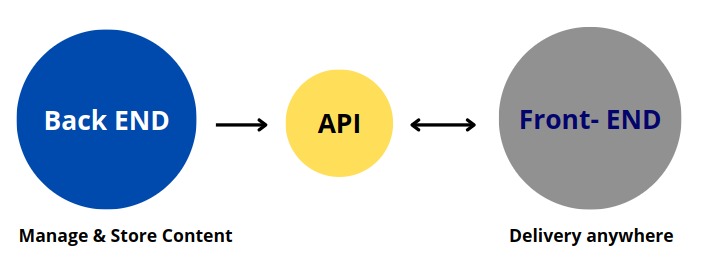Companies and creators are turning to Azure Headless CMS to gain better control over their content.
As part of our Server Management Service, Bobcare’s professionals answer any inquiries, big or little.
Let’s have a look at Azure Headless CMS.
What is Azure Headless CMS?
Azure headless CMS is a headless CMS hosted on Azure. Like previous headless CMS platforms, this also separates the front-end presentation layer and back-end content repository. There are no traditional CMS’s restrictive templates. So the developers can connect the content repository to any front-end interface they want. An Azure headless CMS can surely take advantage of all of Azure’s cloud computing features.

Let’s have a look at the advantages of using Azure Headless CMS.
- Easy to learn: It is very easy to get everything up in Azure Headless CMS. It use familiar tools including ASP.NET, Visual Studio, and C++ to deploy cloud-native applications.
- Compliance and Security: On Azure, data is kept safe. This is because of the Security Development Lifecycle (SDL) feature. In addition, there are more than 90 compliance options to protect data and simplify compliance.
- Scalability: Azure Storage allows to make changes to accommodate more processors. This increase the business’s scalability.
- Analytics: Azure provides cloud-based analytics services. This helps a corporate company with business intelligence, data governance, data warehousing, and other analytics needs.
- Cost-Effectiveness: It is a pay-as-you-go model. We pay for what we use and may scale up as needed.
- Fabric Controller: This feature continuously monitors all hardware conditions. If a virtual machine hosting a server becomes unstable, the controller can reset it. Otherwise, move the application to a new one without requiring the customer’s interaction. This reduces downtime and crashes.
Azure’s Agility CMS
Agility CMS surely tops the list of Azure CMSs. The users now have fast-loading sites that function ideally under high traffic and pose no security concerns. It is made possible with Azure’s Platform-as-a-Service products like Service Fabric, App Service, and Elastic Database Pools, as well as their extensive security compliance.
Need to know more about other Azure CMSs? We are available 24/7.
Content architecture is the first stage in creating a good website for Agility CMS. We plan, arrange, and establish content relationships. Then sending the content to any destination through headless APIs, speeds up website development.
Agility CMS is so adaptable. Even if we start with the design, we can still use a content-first strategy to create a successful website or app.
Azure supports Agility CMS. So we can utilize JAMstack to develop static websites that are lightning-fast. There is no need to scale and maintain it. This distributes static files swiftly over a global CDN.
Looking for a solution to another query? We are just a click away.
Conclusion
To summarize, Azure Headless CMS is the best choice for setting up a headless CMS when it comes to maintaining and distributing content. Our Support team went over the details of Azure Headless CMS in greater depth.
PREVENT YOUR SERVER FROM CRASHING!
Never again lose customers to poor server speed! Let us help you.
Our server experts will monitor & maintain your server 24/7 so that it remains lightning fast and secure.







0 Comments